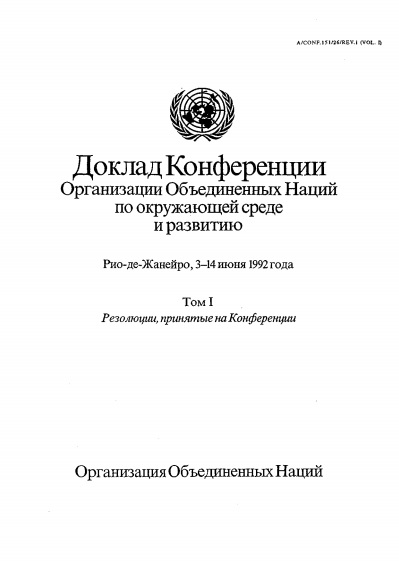| Chapter |
|
| 1. |
Preamble |
| Section I. Social and Economic Aspects |
| 2. |
International Cooperation to Accelerate Sustainable Development in Developing Countries and Related National Policies |
| 3. |
Fighting Poverty |
| 4. |
Changing consumption patterns |
| 5. |
Population dynamics and sustainable development |
| 6. |
Protecting and promoting human health |
| 7. |
Promoting sustainable human settlements development |
| 8. |
Incorporating environment and development issues into the decision-making process |
| Section II. Conservation and management of resources for development |
| 9. |
Protecting the atmosphere |
| 10. |
Integrated approach to planning and rational use of land resources |
| 11. |
Fighting deforestation |
| 12. |
Managing fragile ecosystems: combating desertification and drought |
| 13. |
Rational Use of Vulnerable Ecosystems: Sustainable Mountain Development |
| 14. |
Promoting sustainable agriculture and rural development |
| 15. |
Preserving biological diversity |
| 16. |
Environmentally friendly use of biotechnology |
| 17. |
Protection of the oceans and all kinds of seas, including enclosed and semi-enclosed seas, and coastal areas, and the protection, rational use and development of their living resources |
| 18. |
Preserving the quality and supply of fresh water resources: integrated approaches to water development, water management and water use |
| 19. |
Environmentally sound management of toxic chemicals, including prevention of illegal international traffic in toxic and hazardous products |
| 20. |
Environmentally sound disposal of hazardous waste, including prevention of illegal international traffic in toxic and hazardous waste |
| 21. |
Environmentally sound solid waste management and issues related to wastewater treatment |
| 22. |
Safe and environmentally sound disposal of radioactive waste |
| Section III. Strengthening the role of key populations |
| 23. |
Preamble |
| 24. |
Global Action for Women for Sustainable and Equitable Development |
| 25. |
Mainstreaming Children and Youth into Sustainable Development |
| 26. |
Recognizing and strengthening the role of indigenous peoples and local communities |
| 27. |
Strengthening the Role of Non-Governmental Organizations: Partners in Sustainable Development |
| 28. |
Local Government Initiatives in Support of Agenda 21 |
| 29. |
Strengthening the role of workers and their unions |
| 30. |
Strengthening the role of business and industry |
| 31. |
The scientific and technical community |
| 32. |
Strengthening the role of farmers |
| Section IV. Means of implementation |
| 33. |
Financial resources and mechanisms |
| 34. |
Clean technology transfer, collaboration and capacity building |
| 35. |
Science for Sustainable Development |
| 36. |
Promoting education, public awareness, and training |
| 37. |
National mechanisms and international cooperation for capacity building in developing countries |
| 38. |
International organizational arrangements |
| 39. |
International legal instruments and mechanisms |
| 40. |
Information for decision making |
